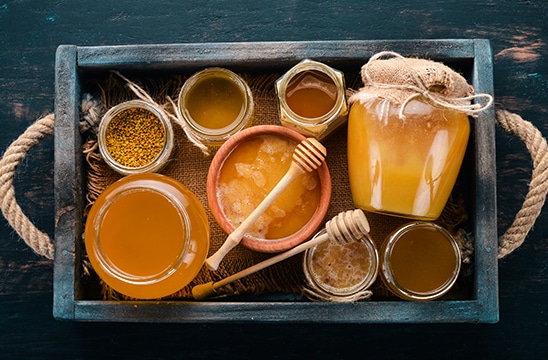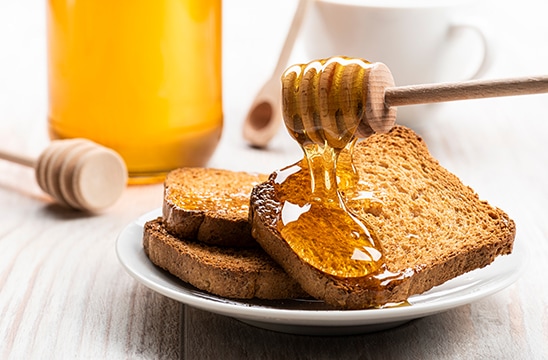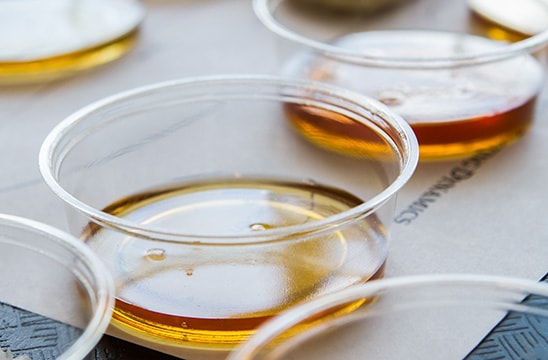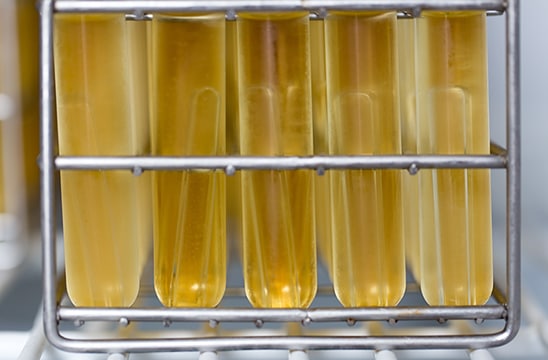Key Takeaways
- Food authenticity testing utilizing chemical fingerprinting strategies is emerging as a practical approach to tracking food fraud
- Chemical fingerprints are virtually impossible to imitate due to their complexity
- The fingerprinting method is regarded as the next-generation surveillance approach for chemicals in food
- Non-targeted analysis using high-resolution mass spectrometry coupled with innovative software enables the rapid characterization of thousands of chemicals in complex food matrices such as honey


Food fraud is a significant concern for consumers and producers, with research indicating that fraud accounts for up to 25% of all globally reported food safety incidents.1 The growing demand for food authenticity means that consumers regularly pay a premium for organic and sustainably produced goods, such as honey. Fraudsters have been flooding markets with adulterated, low-quality, or mislabeled foodstuffs, damaging the livelihoods of legitimate businesses and potentially risking consumer health.
One of the most widely adulterated products globally is honey, particularly the organic variety, a high-value item prized for its unique properties, such as being a good source of antioxidants. According to the U.S. Food Fraud database, it is the third most targeted food for adulteration after milk and olive oil. It’s also financially significant; the global honey market size was valued at USD 9.21 billion in 2020 and is expected to grow at a compound annual growth rate of 8.2%.2
Increasing demand for natural sweeteners

There is an increasing demand for natural sweeteners, such as honey. When consumers purchase a product, they want to be able to recognize the listed ingredients and for those ingredients to be as natural as possible. This is one reason honey, a natural sweetener for thousands of years, has regained increased interest, and honey production and sales are experiencing very high growth across the globe.
Many consumers also want unifloral honey or monofloral honey obtained predominantly from bees that feed on a single species of plant flowers. This results in a unique color, flavor, and fragrance exclusive to each type of unifloral honey. As consumers are willing to pay more for these products, protections must be ensured that they are purchasing what they expect.
According to data from the Food and Agriculture Organization of the United Nations, China, Mexico, Russia, Turkey, and the United States are among the major honey-producing countries accounting for approximately 55 percent of world production.3 The most common form of adulteration involves extending or diluting honey with other less expensive sweeteners. Commonly identified extenders are corn, cane, and beet syrups.4
Testing for authenticity to mitigate honey fraud

Global ecommerce is placing honey sales outside of regulatory oversight more frequently—a trend expected to continue. This, combined with the increase in fraudulent activities makes tackling the problem critical. This is why it is important to identify these substances quickly, efficiently, and consistently. The food industry requires analytical instruments and testing techniques to consistently and rapidly analyze food and identify trace chemicals.
Analytical testing is essential for assessing food authenticity, which is important to protect consumers’ health, the brand, and producers’ income. Testing is a necessary part of an overall strategy to mitigate fraud risk, and methods for authenticity testing are rapidly evolving, with innovative technologies now available for developing robust food testing techniques.
For example, it has been demonstrated in recent years that coupling high-performance liquid chromatography with quadrupole time-of-flight (LC/Q-TOF), such as the Agilent 1290 Infinity II LC System with Agilent 6545 LC/Q-TOF, provides a sensitive method to reveal the chemical composition of honey samples. Using this method with a non-targeted approach enables the identification of new types and sources of fraud through the chemical markers in the honey, highlighting which kind of fraudulent activity is occurring. Since this technique evaluates multiple markers in honey to determine authenticity, it is very difficult for fraudsters to cheat by adding one or a few adulterants. This innovative technique is called honey fingerprinting.
Determining honey’s unique chemical composition
Honey fingerprinting is the practice of using a suitable technique to record as much information as possible on the chemical composition of a particular honey sample. In the same way a human fingerprint is unique to individuals, this fingerprinting method unlocks and records the unique molecular composition of authentic honey samples. This enables the mapping of food components in an unprecedented fashion that will revolutionize how honey is regulated for quality, safety, and authenticity.
Utilizing a non-targeted workflow begins with identifying other compounds, including pesticides, molecules that indicate freshness, like a compound called HMF (which suggests thermal processing or age if present in high numbers), and phenolic compounds, which are related to the floral origin of honey. The advantage of using LC/Q-TOF for this technique is its efficiency: higher molecular/trace information levels can be obtained from just one sample in less time, versus targeted methods focusing on just a few parameters.
Standardizing honey fingerprinting methods

Although previous work has been done developing case studies for fingerprinting foodstuffs, including honey, the approaches among laboratories have been different regarding sample preparation and instrumental condition. There are also differences in terms of data processing and analysis. As a result, two laboratories analyzing the same sample may obtain slightly different results. Ideally, developing a standardized fingerprinting method that could be used across all LC/MS-based workflows, enabling the same testing technique to be used across multiple laboratories, would be optimal and where future work is aimed.
When addressing the issues of food safety, product quality, and authenticity, each may be governed by separate sets of regulations. For example, looking at the residues of contaminants in honey, such as pesticides, there may be differences globally. Countries may have their own restrictions for the maximum limit for specific compounds. Contaminants are a part of the picture when considering fingerprinting for honey, but permitted levels may vary between countries.
Additionally, as samples come from the field to the lab for testing, there is potential interest in reversing this and bringing the lab out into the field instead. This interesting but not yet recognized capability would enable regulators and the global food industry to respond more quickly to honey contamination and food fraud.
Taking a global approach to ensure honey purity

As the food supply chain becomes increasingly globalized, raising the opportunity for food fraud, experts predict that testing, such as those described above, will become more accessible, increasingly automated, and easier to perform. Fingerprinting methods—in which the entire molecular profile of a food can be obtained—will be a feature of fraud prevention and identification systems in the future.
A positive step forward is the focus on building a library of authentic honey samples and making it an accessible, open database so that honey fingerprinting information is available across multiple stakeholders in the global supply chain. With increased knowledge, more scientists will be able to adopt techniques such as LC/Q-TOF, and could also use this testing for other types of food—for example, maple syrup.
The ultimate goal is for food testing laboratories to confidently measure contaminants that threaten the global food chain, and tackle food fraud head-on to ensure that consumers have access to authentic and safe honey.
Learn more